Growing up in Scotland: changes in child cognitive ability in the pre-school years
This report examines whether the gap in cognitive ability between children from different social backgrounds changes between ages three and five and which factors influence improvement in cognitive ability.
CHAPTER 2: EXAMINING THE GAP IN COGNITIVE ABILITY
2.1 Introduction
This section will consider the difference in cognitive ability between children in different social groups at age 3 and age 5. Differences in ability are considered according to parents' level of education 6 , annual household equivalised income and parental socio-economic classification ( NS- SEC 7 ). The gap in average scores between children in different groups will be defined with the size of the gap compared at both time points. In so doing, it is possible to indicate whether known differences in cognitive ability at age 3 persist as children get older and whether the gap in ability increases, decreases or remains stable over time. The effect of other factors will be considered in chapter 3.
2.2 Key findings
- Children in higher income households, those whose parents have higher educational qualifications, and those with higher socio-economic classifications, on average, have better vocabulary and problem solving scores at both ages than children whose parents have lower incomes, lower educational qualifications and are in lower socio-economic classifications.
- The largest differences in ability are between children whose parents have higher and lower educational qualifications. At age 5, compared with children whose parents have no qualifications, those with a degree-educated parent are around 18 months ahead on vocabulary and 13 months ahead on problem solving ability.
- The gap in vocabulary ability between those children in the lower and upper education groups widened between ages 3 and 5 whereas the difference in vocabulary ability between children in the lowest and highest income groups reduced slightly and the difference by social class did not change.
- The gap in problem solving ability by parental education and social class narrowed whilst differences in problem solving ability by income level widened.
- Of the three social background characteristics considered, parental level of education was most strongly associated with change in cognitive ability between ages 3 and 5. The largest change in size of the ability gap for all children was in relation to differences in education and children whose parents had higher qualifications were more likely to see their relative ability improve in the period than those whose parents had no qualifications.
- Lack of parental qualifications appears to have a continuing detrimental effect on children's vocabulary ability during the pre-school years. Children whose parents have lower qualifications have lower ability at age 3 and are less likely to see a improvement in their ability, when compared to their peers, during the pre-school period meaning that they fall further behind other children ahead of their entry to school where, other research suggests, they will continue to do so.
2.3 Differences in expressive vocabulary at ages 3 and 5
Figure 2-A to Figure 2-C display the mean standardised vocabulary ability scores at 3 and 5 years by household equivalised income, parental level of education, and parental socio-economic classification. In each graph, the horizontal line with the value '0' represents the mean score for all children in Scotland at the respective age. The bar in the furthest right position illustrates the difference in mean scores between the top and bottom groups - that is, the size of the ability gap (measured in standard deviations). For example, in Figure 2-A, this bar indicates that the mean vocabulary score for children in the lowest income group is 0.77 standard deviations below the mean score for children in the highest income group. In addition, the bar for the lowest income group (at the very left-hand side of the graph) indicates that, on average, those children scored 0.5 standard deviations below the average score for all children.
Irrespective of the particular characteristic considered, the graphs clearly indicate the difference in knowledge of vocabulary by the child's social background. Children in higher income households, those whose parents have higher educational qualifications, and those with higher socio-economic classifications, on average, have better vocabulary scores at each age than children whose parents have lower incomes, lower educational qualifications and are in lower socio-economic classifications.
The differences in scores between the top and bottom groups range from 0.59 to 0.88 standard deviations. The largest differences observed are by parental education. At age 5, children with at least one parent who has a degree or equivalent qualification had an average score 0.88 standard deviations higher than children whose parent(s) had no qualifications. The smallest differences are in relation to NS- SEC.
Figure 2-A Mean standardised vocabulary ability score by equivalised household income
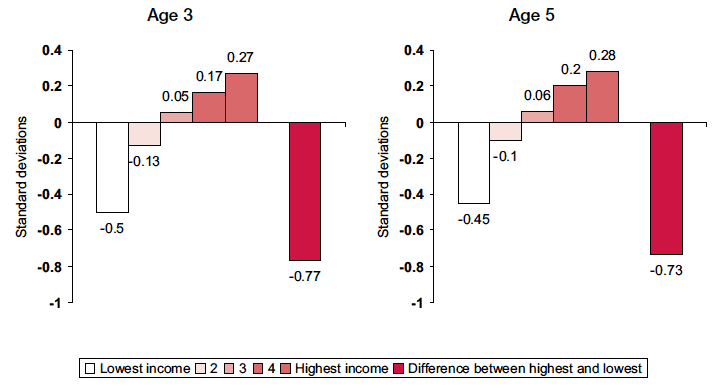
Figure 2-B Mean standardised vocabulary ability score by parents' level of education
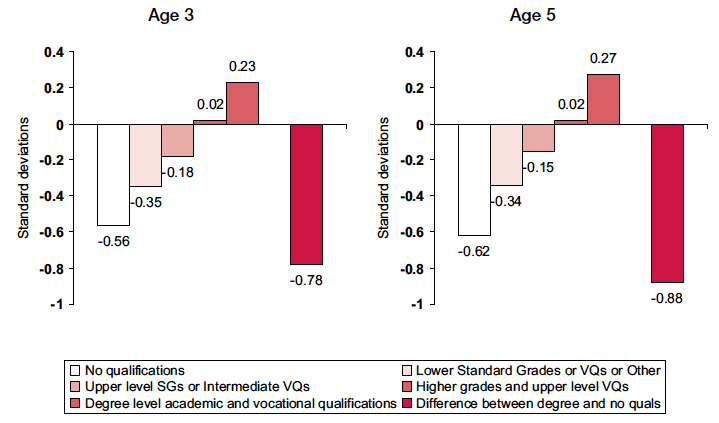
Figure 2-C Mean standardised vocabulary ability score by parental NS- SEC
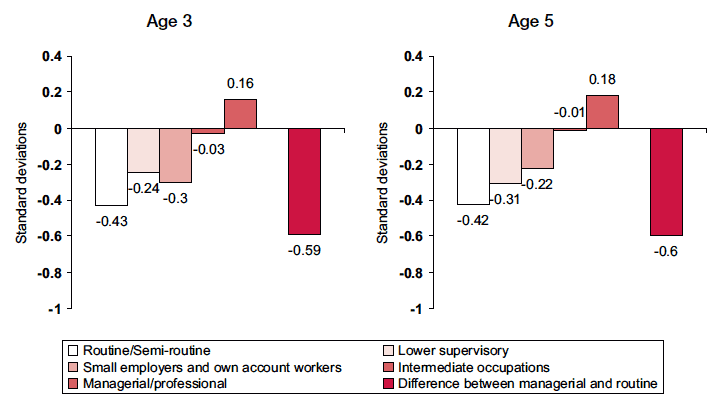
2.3.1 Age equivalent differences
The use of standardised scores, whilst necessary to compare changes over time, makes it difficult to comprehend the actual size of these differences in developmental terms. To allow a better, although cautious, understanding of this it is possible to report the difference in average scores as an 'age equivalent' based on the progress which would be expected of a typical child at the respective age. Calculations undertaken and published by researchers on the Millennium Cohort Study (Hansen, 2008) provide such monthly estimates 8 .
Based on these estimates, at age 5, children with a degree educated parent have a vocabulary ability around 6 months ahead of the average level obtained by GUS children at 5 years and around 18 months ahead of those whose parents have no qualifications, who are therefore around 12 months behind the average ability.
Compared with children in the lowest income group, those in the highest income group were around 13 months ahead in their knowledge of vocabulary. Finally, children from managerial and professional households were approximately 11 months ahead on vocabulary when compared with children whose parents had routine or semi-routine occupations. This again illustrates that the largest gaps occur according parental level of education.
2.3.2 Changes in the ability gap
As noted above, the very right-hand bar in Figure 2-A to Figure 2-C displays the difference in mean scores between the top and bottom groups. In other words, this bar illustrates the size of the ability gap. By comparing this figure at both time points it is possible to infer whether the gap has decreased or increased over time.
The ability gap by parental level of education increases, there is a slight reduction in the gap between the lowest and highest income groups and there is virtually no change in the gap between children in routine or semi-routine households and those in managerial or professional households.
The gap between the lowest and highest education groups increases over time by 0.1 standard deviations. At age 3, children whose parents had no qualifications on average scored 0.78 standard deviations below children with a degree educated parent. By age 5, this difference had increased to 0.88 standard deviations. This overall increase in the gap is caused both by a drop in the average scores for the lowest education group (moving from -0.56 at age 3 to -0.62 at age 5) and an increase in scores for the highest education group (moving from 0.23 at age 3 to 0.27 at age 5).
Scores improve generally for children in all income groups. The reduction in the gap results predominantly from the scores of children in the lowest group increasing to a greater degree than those in the highest income group.
2.4 Differences in problem solving ability at ages 3 and 5
Figure 2-D to Figure 2-F display the mean standardised problem solving scores at age 3 and at age 5 by household equivalised income, parental level of education, and parental socio-economic classification. As before, the bar in the furthest right position in each graph displays the difference in mean scores between the top and bottom groups - the size of the ability gap.
The trends observed in relation to problem solving ability are similar to those seen for the vocabulary scores. Across each background measure, children in the most disadvantaged groups score lowest and those in the most advantaged groups score highest, with relative scores increasing as levels of income, education and socio-economic classification increase.
The difference between the various groups is considerably broader in relation to problem solving than it is for vocabulary. So far as NS- SEC is concerned, at age 5, the range stretches from a minimum of just 0.30 standard deviations between children in routine or semi-routine households and those in managerial or professional households, to a maximum 0.73 standard deviations between those in the lowest and highest income households. The magnitude of differences observed by parental education and level of household income are quite similar at around 0.7 standard deviations between the top and bottom groups at both time points.
Figure 2-D Mean standardised problem solving score by equivalised household income
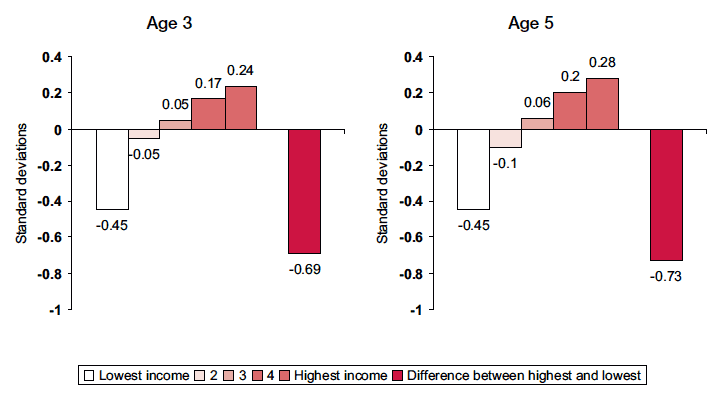
Figure 2-E Mean standardised problem solving score by parental level of education
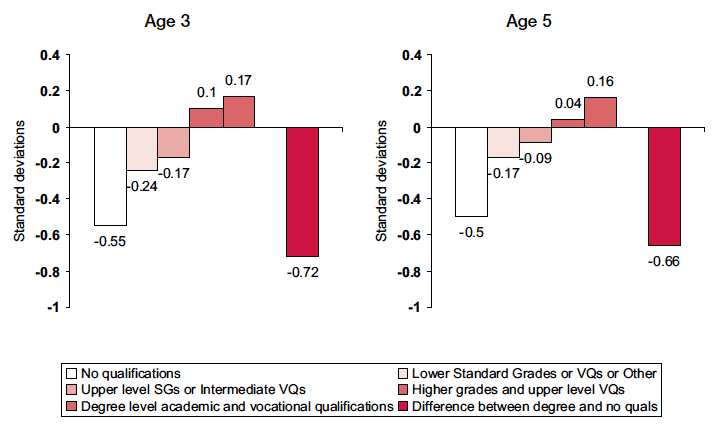
Figure 2-F Mean standardised problem solving score by household NS- SEC
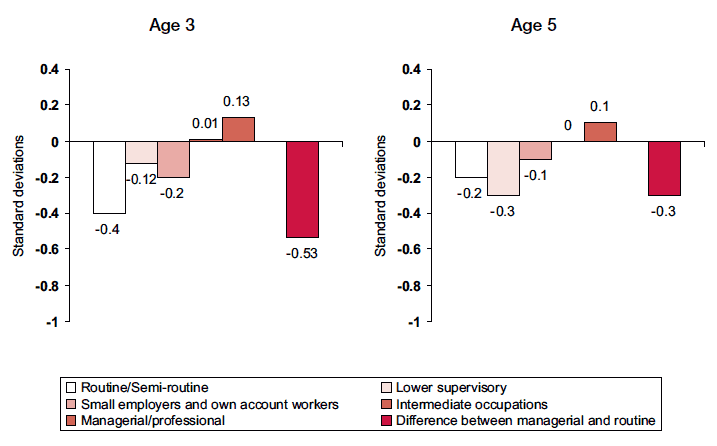
2.4.1 Age equivalent differences
Again, estimates (based on MCS research) allow the consideration of age equivalent differences based on the expected progress of an average child around the respective assessment age.
These estimates suggest that, at age 5, age equivalent differences between children in the most and least advantaged groups are a little narrower for problem solving ability than for knowledge of vocabulary, although they are still considerable. Children whose parents have no qualifications had an average score which placed them around 10 months behind the average ability and 13 months behind those with a degree educated parent. Compared with children in the highest income group those in the lowest income group were around 10 months behind in their problem solving ability (compared with 13 months difference in vocabulary). Finally, children whose parents had routine or semi-routine occupations, when compared with children from managerial and professional households, were approximately 6 months behind on problem solving (compared with 11 months behind on vocabulary).
2.4.2 Changes in the ability gap
Again, using the very right-hand bar in Figure 2-D to Figure 2-F allows consideration of change in the size of the ability gap during the pre-school period. The direction and magnitude of change is quite different for each of the background characteristics.
The ability gap by parental level of education decreases, there is a slight increase in the gap between the lowest and highest income groups and there is a notable decrease in the gap between children in routine or semi-routine households and those in managerial or professional households.
The gap in ability by household income increases slightly from 0.69 to 0.73 standard deviations. This change results from an increase in average scores amongst children in the highest group - there is no change in scores amongst children from the lowest income group. Differences by parental level of education decrease from 0.72 to 0.66 standard deviations. This decrease occurs via an improvement in scores amongst children whose parents have no qualifications (from -0.55 to -0.50) and a slight downward movement in scores amongst the degree-educated group (from 0.17 to 0.16). The largest change is in relation to socio-economic classification where the gap reduces considerably from 0.53 to 0.30 standard deviations. The majority of this change is realised through a considerable improvement in scores amongst children in the routine/semi-routine group where scores increase from 0.40 standard deviations below the mean to 0.20. There is also a slight decrease in scores at the top end from 0.13 to 0.10.
2.5 Income, education or social class?
There is some overlap between which people belong to the various social background categories considered thus far; families where parents are more highly educated are more likely to have higher incomes and to be in managerial or professional occupations. The analysis undertaken thus far does not identify whether each characteristic impacts on children's ability independently of the other characteristics. For example, it is unclear whether the changes observed by socio-economic classification have occurred simply due to the fact that managerial and professional parents are more likely to be degree-educated, or to have higher incomes.
Analysis was used to determine which characteristics are related to positive and negative individual level change 9 in relative ability on each assessment when holding the other, potentially confounding, characteristics constant. 10 The results of this analysis indicate, irrespective of the child's ability score at age 3 (thus whether or not they had a low, average or high score at that time), which factors are associated with a relative improvement or decline in ability during the pre-school period. The results are summarised in Table 2.1 11 .
Parental level of education was the only characteristic which was associated with individual level change in relation to both assessments. When compared to children whose parents had no qualifications, those whose parents had passes at Standard Grade, Higher Grade, or a qualification at degree level, were more likely to improve on their relative ability during the pre-school period. Whilst significantly associated with relative improvements in both types of ability, the relationship between education and problem solving ability was weaker and only those children whose parents had Higher Grades or above were more likely to improve their relative score more so than those in the no qualifications group.
Household income was also significantly associated with change in vocabulary ability. Children in higher income households at the third quintile or above were more likely than those in the lowest income group to show improvement in vocabulary in the pre-school period.
Socio-economic classification was not significant in either model suggesting that the changes in the ability gap observed in relation to this variable in section 2.4.2 appear to be explained largely by differences in income and education.
The individual level results presented in Table 2.1 demonstrate some differences from the group level trends seen above in Figure 2-A to Figure 2-F. For example, for problem solving, whereas the broader level analysis indicated a narrowing of the ability gap between children from better and worse educational backgrounds between ages 3 and 5, the individual level data indicates that children whose parents have higher qualifications are, individually, more likely to see a relative improvement in their scores during that time.
Table 2.1 Statistical significance of independent associations between selected social background characteristics and change in cognitive ability between ages 3 and 5
| Social background characteristic |
Cognitive ability |
|||
|---|---|---|---|---|
| Knowledge of vocabulary |
Problem solving |
|||
| Household equivalised income |
Sig.* |
Direction of change** |
Sig.* |
Direction of change** |
| 2nd Quintile (>=£11,875<£19,444) |
NS |
NS |
||
| 3rd Quintile (>=£19,444<£25,625) |
<.05 |
+ |
NS |
|
| 4th Quintile (>=£25,625<£37,500) |
<.01 |
+ |
NS |
|
| Top Quintile (>=£37,500) |
<.05 |
+ |
NS |
|
| Parental level of education |
||||
| Lower SGs or VQs or 'Other' quals |
NS |
NS |
||
| Upper level SGs or Intermediate VQs |
<.01 |
+ |
NS |
|
| Higher Grades or upper level VQs |
<.05 |
+ |
<.05 |
+ |
| Degree level academic or VQs |
<.001 |
+ |
<.05 |
+ |
| Household socio-economic classification |
||||
| Lower supervisory |
NS |
NS |
||
| Small Emps and Own Account |
NS |
NS |
||
| Intermediate |
NS |
NS |
||
| Managerial/professional |
NS |
NS |
||
| Weighted base |
3133 |
3130 |
||
*Statistical significance is presented either as 'Not Significant' ( NS) or at three levels of 'confidence' - 95% (<.05), 99% (<.01) or 99.9% (<.001). All figures quoted in this report have an associated margin of error, due to the fact that they are estimates based on only a sample of children, rather than all children. This margin can be estimated for each figure. For a figure which has a significance value (or p-value) of <.05 or 95%, this indicates that there is a 95% chance that the true value across all children in the subgroup (as opposed to just those in the sample) falls within the margin. Thus a lower significance value (of <0.1 or <0.01) indicates a lower margin of error and a greater chance that the figure or relationship presented in the report occurs within the population.
**A plus sign (+) indicates relative improvement in ability score and a minus sign (-) indicates relative decline in ability score for children in the various sub-groups as compared those in the reference sub-group. The reference sub-group is indicated in brackets. Where the variable is not significant, direction of change has not been included.
2.6 Summary
In relation to the first research question posed by this report - whether the gap in cognitive ability between children from different social backgrounds changes between ages 3 and 5 - the answer is yes. However, the size and direction of the change varies according to the particular background characteristic considered and the ability being assessed.
Much previous research on this issue has focused on ability gaps across children from different income groups (Blanden and Machin, 2010; Feinstein, 2003; Waldfogel and Washbrook, 2010). Recent analysis of MCS data (Blanden and Machin, 2010) suggested that there was little change in the size of the gap in vocabulary ability between children in lower and higher income households between ages 3 and 5, and further that average scores amongst children in the lowest income groups had not declined during the period considered. This was interpreted as a small, but positive improvement for that group.
The analysis here did show change in the ability gap between children in different groups:
- For vocabulary, the ability gap by parental level of education increases, there is a slight reduction in the gap between the lowest and highest income groups and there is virtually no change in the gap between children in routine or semi-routine households and those in managerial or professional households.
- For problem solving, the ability gap by parental level of education decreases, there is a slight increase in the gap between the lowest and highest income groups and there is a notable decrease in the gap between children in routine or semi-routine households and those in managerial or professional households.
The GUS data shows a slight reduction in the ability gap by household income during the pre-school period. Whilst children in all income groups show a relative improvement in scores, there is a particular improvement in the average scores for children in the lowest income group. This contrasts with change across income groups in relation to problem solving ability, where a slight increase in the ability gap is evident.
The variations in ability observed by level of parental education are quite different. Our findings suggest that lack of parental qualifications has a continuing detrimental effect on children's vocabulary ability during the pre-school years; children from lower educated households, already likely to have poorer ability at age 3, fall further behind their peers ahead of their entry to school. Other research suggests (Feinstein, 2000; Heckman and Wax, 2004) they will continue to fall further behind after entering school. In contrast, those children with a degree educated parent improve on their position, moving further ahead than the average child, and considerably further from those whose parents have no qualifications. This effect is not observed in relation to problem solving ability. Indeed, the gap in problem solving ability between children in the lowest and highest educational groups reduces slightly in the pre-school period.
Whilst the preliminary analysis suggested some impact of socio-economic classification on ability, the additional analysis indicates that this effect is mostly explained by the education and income distribution of parents across the occupational classifications. Indeed, the analysis showed that parental level of education was most closely associated with change in vocabulary and problem solving ability in the pre-school period.
Earlier research using GUS data on children's cognitive ability at age 3 (Bromley, 2009) showed that other factors in a child's circumstances and environment can mediate the very strong effects of parental education on cognitive ability. These other factors contributed to the higher achievement of children whose parents had lower educational qualifications. What factors, then, can facilitate change in these abilities during the pre-school period? This issue is considered in the next chapter.
There is a problem
Thanks for your feedback